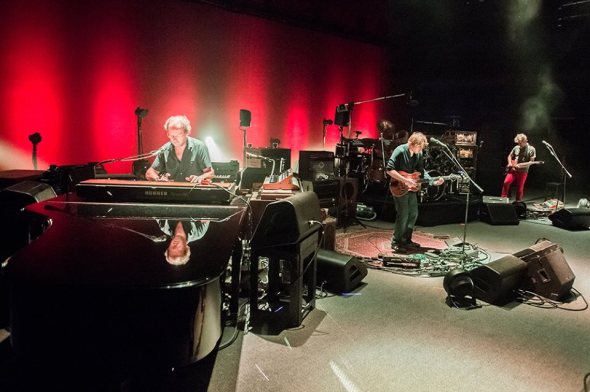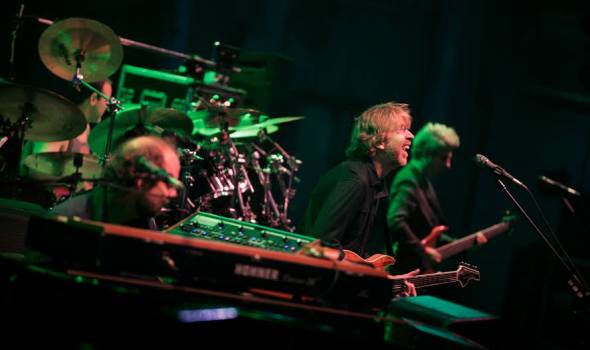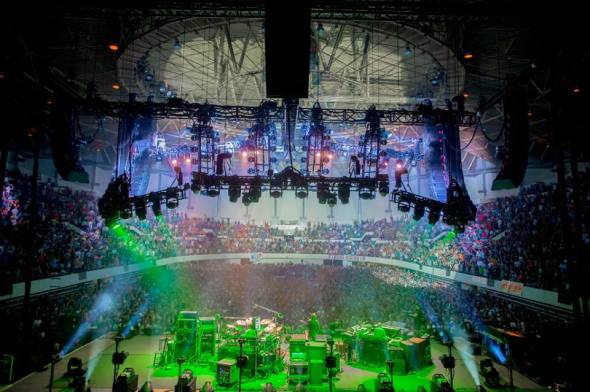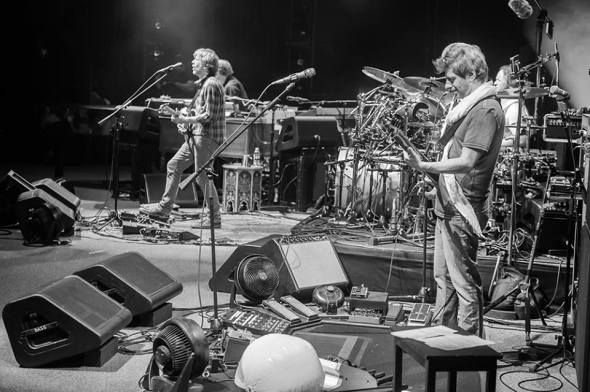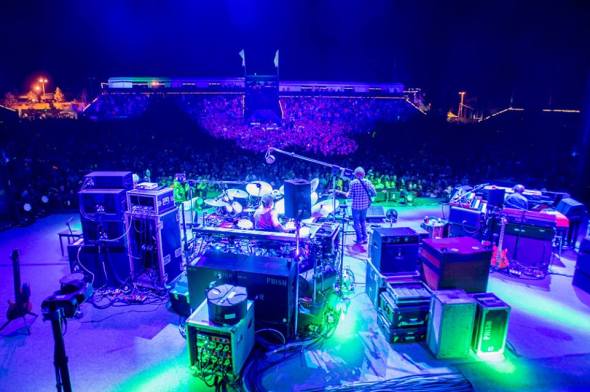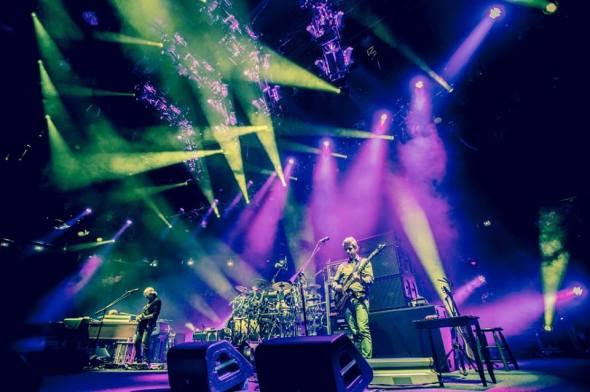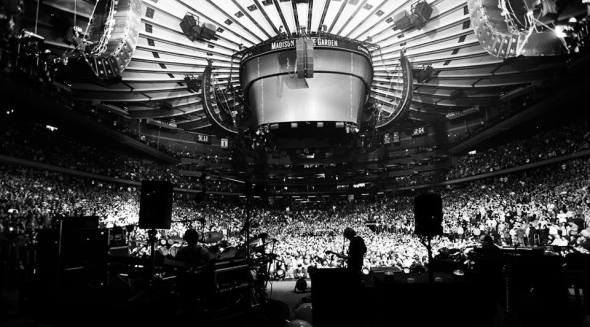
Friday, January 31, 2014
Thursday, January 30, 2014
How To Make a Living in America
"The guys here in Las Vegas who make the lines — some of them should work on curing cancer."
The New York Times talking about Vegas Runner, R.J. Bell, Fezzik, and others...makes me laugh. I listen to these guys on a daily basis. Their photos make them look like degens.
“I wake every morning like a kid on Christmas,” Oancea said. “I can’t wait to get up and go bet on games.”
The New York Times talking about Vegas Runner, R.J. Bell, Fezzik, and others...makes me laugh. I listen to these guys on a daily basis. Their photos make them look like degens.
“I wake every morning like a kid on Christmas,” Oancea said. “I can’t wait to get up and go bet on games.”
Thursday, January 23, 2014
Chicago Cub # 31
Professor Maddux does right again.
It was seen as a given that Greg Maddux would go into the Hall of Fame wearing the cap of the Atlanta Braves, the team for which he spent the most time and had the most success.
It was seen as a given that Greg Maddux would go into the Hall of Fame wearing the cap of the Atlanta Braves, the team for which he spent the most time and had the most success.
But the Hall announced Thursday that Maddux’s plaque will have no logo, a small but telling victory for the Cubs, who let the four-time Cy Young Award winner leave as a free agent in his prime.
Of the six new inductees into the Hall, only Maddux and Tony La Russa will go in without a logo on their plaques.
“My wife Kathy and I grew up in baseball in Chicago, and then we just had an amazing experience in Atlanta with the Braves,” Maddux said in a statement. “It’s impossible for me to choose one of those teams for my Hall of Fame plaque, as the fans of both clubs in each of those cities were so wonderful.
“I can’t think of having my Hall of Fame plaque induction without support of both of those fan bases, so, for that reason, the cap on my Hall of fame plaque will not feature a logo.”
"I spent half my career in Chicago and half my career in Atlanta," he said. I came up a Cub, played there for six years and went back for three more. I was in Atlanta for 11 years. It comes out to about the same amount of time in both cities.
"Love both places. Obviously, I feel like I had more success as a Brave. We did get a World Series there. But I came up a Cub. For me, I couldn't pick. I really couldn't. Both places mean so much to me personally and my family. I'm going to go in as neutral, I guess."
I Hate Fucking Folk Music
ETHAN COEN: I'll tell you the truth. We wrote this script not only quicker than we usually do most of them, but maybe even quicker than we've done any of them. I don't know why.
JOEL COEN: There's not a lot of plot. In the middle of it, we thought, "Okay, we're writing something that doesn't have the usual engine in terms of forward momentum or narrative drive." It's just not a "plot movie," and to insert plot elements in any conventional sense into a movie like this would be wrong. It's a movie about following a guy for a week or so, to whom not very much happens.
ETHAN COEN: We would reject things for being too "dramatic." In the context of this story, it would be easy for things to feel too melodramatic, and we wanted it to be kitchen sink-y. But when it came to the song for Llewyn's audition scene, that's something we had trouble with: What's he gonna play for his important audition for this music manager? Those songs are every bit as character-defining as much as the dialogue is, and we didn't know what the song in that scene would be.
JOEL COEN: So you think about things that you've heard and things that you've listened to in your life. It's kind of hard to just take the scattershot approach of, "Oh, I'll just listen to a whole bunch of new songs for the first time and hope that one of them will work"; it's more the case with a lot of this stuff that you finally remember, "That's the song."
ETHAN COEN: In the case of this scene, Oscar was already cast and we still didn't know the song we were going to use. Oscar had some input into it, and he wanted a very bluesy, showy Dave Van Ronk song. And we thought, "No, that's not right for this." But even the wrong thing can be good to hear, because it leads to a conversation. Somebody says the wrong thing, and you get to react to it and decide, "Okay, why is that wrong?" And it helped us to figure out what might be right, and that's how we remembered the song we ended up using, "The Death of Queen Jane."
Uncle Neil
Keep on rockin' in the free world.
So this is a cool night because we're all here together. I know almost everybody here. If I don't know you, I thought I did when I saw you. It really is great. A lot of us, you know, producers and engineers –I'm kind of a producer, partially, an engineer, I'm not really good at either one. It's hurt my records in the past. We're performance-oriented: technical things don't matter that much.
That's only one way of making records. A lot of you out here are craftsmen: just beautiful records, and take great care with every note. And I know I'm not one of them. I like to capture the moment. I like to record the moment. I like to get the first time that I sung the song. I like to get the first time the band plays the song. So there's a lot of compromises you make to get that feeling, but in the long run, that's where the pictures are when I hear my words and when I see the pictures while I'm listening. So that's what we try to record.
Recording is so important. We think about the equipment, we think about what are we using, what do we have, what are we recording on, what are we singing through, where is it going, how long is the wire? Why is that piece of shit in the wire between me and where I'm going? Get that out! Don't join the wire together, get one wire, because every time you go through one of those pieces of crap, something happens. We paid big bucks for this place, and we're going to use every bit of it. And we're not going to use what we don't want. Thank you. Great recording here.
I did record here! I think I recorded a few tracks here a long time ago. There's a song, "Like a Hurricane," that I didn't record here. But I couldn't sing at that time, when I recorded that, because I had just had some sort of operation. They told me to stop for a month, but I couldn't stop the music, so in my studio at home, me and Crazy Horse got together and we played this track. It was about fifteen minutes long, because I'd just written it the night before. I recorded it on an acoustic – now let's play with all these other instruments and it's going to be great.
So we got the instruments out and we played it once. And we screwed it up really badly at first. If you listen to the record, you can tell we screwed it up. We cut it off. It just starts out of nowhere. But that was over – now we're in the record. And it's divided, it doesn't matter how cool and together the beginning was, but where it went as soon as it started. So we shortened a little bit.
Then I was here at this place, in 1974 or something, and I said, "You know, a couple of weeks ago, when I couldn't sing – " By the way, I know I can't sing. I mean I couldn't make a sound. And of course, this was back in the day, way back there. So I'm saying, "We have this tape here. I brought this piece to multitrack. We've never played it. I'm going to sing it, because I never got a chance to sing it."
So we put it on, and he played back about ten seconds, and I said, "Okay, stop. Everything was working, right? We heard everything? Okay, there's no reason to listen to it. Because I was there – I know what it is. And it's on the tape. We don't have to listen to it. Let's not wipe the shit off the tape listening to it. Let's record while the stuff is still on – let's listen to what's there, and record it to a two-track while it's still there." Because if you listen over and over and over again, it goes away, bye-bye! Because the tape doesn't like to rub over this head, and then part of it goes away, it's terrible. That bothers me every time the tape plays. So I never hardly ever listen!
Okay, they put the tape on and I went out and I talk: "Am I there?" Yes. "Good. Okay. Record. Number one. Just record all the time – that's why we're here. Don't not record at all, ever. Record! It's a studio! Record! Practice at home! The red button's not that scary, really not."
So we press the button and they start the tape, and I start singing the song. It's long, so it's like, four or five verses over and over again. So I sing one verse, and then the other verse – there's only two verses, so I just keep singing them, one after the other. Later on, we can cut it down. The other guys aren't here, and I hear the harmony part, so I want to sing the harmonies now. We did the harmonies, so we did three tracks, three times through, one time on each track. We had all this stuff, and it was the first time I ever heard it. The first time I ever listened to "Like a Hurricane." And I was hearing it, and I was singing it, and I sang the harmony, and I sang the other harmony, and then we mixed it. So it was like the five-and-sixth time, and then we mixed it. There's a message in there somewhere.
My memory of this place is what it is, that we do records like that. The idea is, for me, to try to get magic. Who knows where the hell it's coming from? I don't – so please record. It's expensive to sit here and not push the button.
I know who you people are. I know you're animals, and I know some of you are very funny. Some of you are just dry – never laugh. "Good morning." I love you all people, because I know what you're doing. I know how crazy you are about all the things that I don't care about. Sometimes you make great records, and it's fantastic. They're not like my records – sometimes I can't feel them, but I really appreciate them. No, sometimes I can feel them and I go, "Holy shit, how did they do that? How did they make that record? I know they layered it – it's not like a documentary where something happens and you take a picture, cinema verite. This is a movie: somebody created all the scenes, and there was the dialogue, and then they did the dialogue again, and there was the foley to do the sounds, and they did all the stuff, and everything's perfect – but it's still good."
There's nothing wrong with that – it's just a different way of doing it than I could ever do, because I have so little ability to do that, that it would really suck: over and over again, getting it right. That's why I'm flat, that's why it doesn't matter that there's bad notes. That doesn't mean it's not production – it just means it's the kind of production that we do.
Some people are here tonight that I've worked with over the ages that are just really incredible people. Al Schmitt's here tonight. And Niko Bolas, he's here. John Hanlon is here. I really appreciate that these guys are – I know you really appreciate, especially Al, because he's the father of what's going on here, and he's still here. He has staying power. And he was recording the way that I want to record now. I'm going to make a record with Al – we're talking about making a record together where there's only one mic, but we do a huge orchestra. And when we finish doing that performance, and every guy's standing the right length from the mic: the background vocal is like "hey-hey-hey," and of course I'm up here, but they're right there, so it sounds like that there. So we're going to do it that way. We're not going to mix it: we're going to do it, and mix it while we do it. Everybody can get in the right place, and if it's not righ – -well, we'll move the bass up. Move the bass closer. It's not loud enough? Move the amp closer, then! It sounds good, but it's just too quiet, so move it up. Move it in, and the drums? Leave it over there, go back farther.
Do you know how fun that is to do? That is so much fun. It's like playing music – it's not making music, it's playing it. I love doing these things. And I'm anxious to do something I've never done before, because there were great records made that way. There's something that happens with one mic. When everyone sings into one mic, when everybody plays into the same mic: I've just never been able to do that, with some rare instances like when I record in a recording booth from a 1940s state fair. I got that sound by closing myself into a telephone booth. And I notice, it sounds just like an old record. And I like the sound of old records! I've always loved that.
So all I'm trying to say is I'm one of you. You honor me, you're honoring yourself. It's not me: it's you. It's what we do. Thank you so much. Digital. Digital is not bad. But Xerox is not good. I always like to say Picasso was really happy to see original Picassos everywhere, but when he went into some places and saw Xeroxes of Picassos, it didn't make him as happy, because he thought people thought that we was making those things. The thing we do is, we make great stuff in the studio and then we kiss its ass goodbye, because nobody's ever going to hear it. That's unfortunate, and it didn't use to be that way. That's something that happened to us – that's an injury we sustained, and it deeply hurt us. So the time has come for us to recover and to bring music back to the people in a way that they can recognize it in their souls – through the window of their souls, their ears. So they can feel and vibrate and so that they can get goosebumps. We cherish those fucking goosebumps. We really need those.
Being impressed by something, and how cool it is, and how sharp it is, and how snappy it is, is one thing, and that translates into almost any media. But when you're singing something very soulful from your heart, and the echo is perfect and everything's great and you're using maybe an acoustic chamber and everything sounds great. And then you listen to it and you love it, but you hear it somewhere else and it's gone – that's terrible. We don't like that. Not many of us like that, we're not happy about it. So we're trying to change that, and we're trying to make it better. We're trying to make music sound technically better, and that's what I want to do. So we have a player that plays whatever the musicians made digitally, and that's going to come out. We're announcing that at SXSW, we're introducing it, it's calle
Tuesday, January 21, 2014
a garden party
This is the most fully realized summation of the 30th anniversary year of Phish. All encompassing.
Their Past. The Present. The Future.
a Phish blog
Post navigation
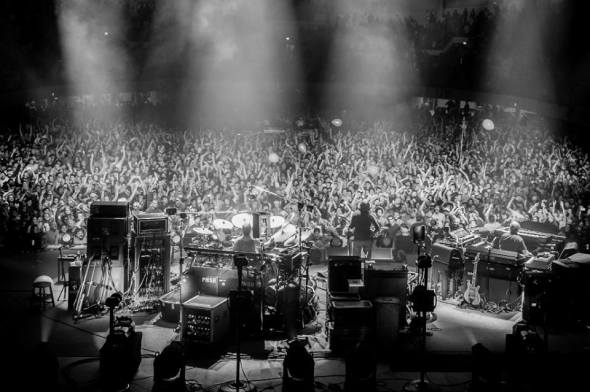 On 31 December 2012 Phish opened their final show of the year with a cover of Ricky Nelson’s 1972 hit “Garden Party.” A song Nelson had originally written after being booed off that same Madison Square Garden stage during the 1971 Rock ‘n Roll Revival Show, it was a fitting nod to the place Phish found themselves in both musically, artistically, and personally at the onset of their 30th year. Highlighted by the line, “You can’t please everyone, so you’ve got to please yourself,” the song would not only serve as a tongue-in-cheek jab at some of the more impatient members of Phish’s sprawling fan base, but would become something of a rallying cry for the band as they embarked upon their 30th year together as a collective unit.
On 31 December 2012 Phish opened their final show of the year with a cover of Ricky Nelson’s 1972 hit “Garden Party.” A song Nelson had originally written after being booed off that same Madison Square Garden stage during the 1971 Rock ‘n Roll Revival Show, it was a fitting nod to the place Phish found themselves in both musically, artistically, and personally at the onset of their 30th year. Highlighted by the line, “You can’t please everyone, so you’ve got to please yourself,” the song would not only serve as a tongue-in-cheek jab at some of the more impatient members of Phish’s sprawling fan base, but would become something of a rallying cry for the band as they embarked upon their 30th year together as a collective unit.
Throughout 2013, the message of “Garden Party” felt ever-present, as the band sought to craft a six-month-long celebration of everything that had come to define Phish since 1983. In the summer, they emerged from hibernation with an overtly old school, foundational-setting run of shows from 07/03 – 07/21. Beaming with confidence, they went on to poke fun at their more obsessive fans in Chicago’s, ‘Poster Nutbag, the right way’“Harpua,” before crafting one of their seminal pieces of extended improve in the “Tahoe Tweezer” just ten days later. Friday night at Dick’s was once again devoted to gimmickry, this time as the band informed us that Most Shows Spell Something (Backwards). The Fall Tour that followed was a non-stop dance party with a signature throwback feel. And on Halloween the band debuted their new album – tentatively titled Wingsuit – in a move that has had the entire Phish community buzzing with thoughts and analysis ever since. Closing out the year with one more celebratory gag, Phish played an entirely coverless NYE Run, honoring the songs that had brought them so much acclaim throughout the years. Without question, 2013 was defined in large part by Phish’s desire to “please themselves” – without any regrets – in commemoration of everything they’d built (and rebuilt) since their college days.
What’s more though, was how “Garden Party” worked as a premonition for a band seeking to do more than simply garnish their 30th year with a nostalgic hue. Rather, 2013 saw Phish acutely pivot towards the next phase of their career. For, as much as 2013 was indeed about celebrating the essence of Phish – and their legacy – it was in many ways, more so about what’s next for a band that has systematically rebuilt itself from near-death, and now, at the onset of their 31st year, is in the midst of their most substantial peak period since the halcyon days of 1993-1998.
——–
Let’s pause for a moment, and take a step back to July 2010. At that point Phish had been back together for 17 months. Throughout they’d compiled four 10-15 show tours, alongside three, smaller, holiday-based/reunion runs. There’d been nights where they’d felt like Phish again. Nights where everything clicked: where they told jokes, where they pulled oft-forgotten songs out of nowhere, where their setlists flowed with precision, determination, and ease, and where they hooked up for extended pieces of forward-thinking, emotive, and ultimately revealing improv. But for all of the positivity that surrounded the 70 shows that had thus far made up Phish 3.0, there was a prevailing fear throughout much of their fan base that, perhaps, the band simply didn’t have it anymore. Too often they’d follow a breakthrough show with a run of unfocused and disconnected duds. Too many jams either followed a strict formula of assaulting rock -> rhythmic breakdown -> ambient fade, or would be cut off prematurely by Trey’s insistence on keeping the show moving. Too many shows featured a band that, simply put, appeared a shell of its former self. During the month-long break in Summer 2010, many openly wondered what would become of Phish 3.0?
Would they follow the same trajectory of their haunting and ultimately unsustainable 2.0 era; fading unfulfilled, full of regret, bemused with far more questions than answers?
Had Phish become (gasp) a nostalgia act?
Could they reestablish the unspoken communication that had led them to so many musical and artistic heights throughout their heyday?
Would they ever again evolve with the kind of abstract precision and focused experimentation that saw them transform from a psychedelically-infused speed-jazz quartet in 1993 to a spacious, patient, rhythmic juggernaut just five years later?
Could they do it again?
From the vantage point of January 2014 we know what happened. Barring a few setbacks along the way – parts of June 2011 and NYE 2011, most notably – when Phish reemerged for the second leg of their 2010 Summer Tour, they were a fundamentally different band. Since then they’ve been on a consistent upward trajectory, evolving with patient determination, overcoming many of the challenges set in front of them in 2009, and undoubtably blowing away even the headiest expectations any of us could have had for them when they announced their reunion back on 1 October 2008.
Beginning in earnest with the infusion of Trey’s Ocedoc – a move that systematically rounded-out his tone, resulting in him taking a more deliberate approach to building simple melodic lines, while also focusing more on rhythm – Phish has evolved with stunning speed over these past four years. Stylistically morphing – from the melodic jams of late-2010 to August 2011′s dive into the storage shed, to the cubist approach of 2012 – and further deepening their communication, they have consistently driven forward from the moment the Greek “Cities” dropped into its infectious whole-band groove-jam. A reflection of their own musical maturity and craftsmanship – and also the experience they’d gained from 25-years of friendship and collaboration – from August 2010 onwards, each tour has provided crucial reference points to Phish’s current peak. Be it the improvisational boon of August 2010; the self-referential gimmickry and humor of Fall 2010; June 2011′s experimentation & embrace of potential failure over conservatism; “The Storage Jam” and the darkness that engulfed many of their subsequent jams throughout August and September 2011; the 200-song challenge of June 2012; the fully-realized, multi-layered jams of August 2012; or the masterful run of creativity and exploration that was Dick’s and MSG 2012; there’s no denying the fact that following their initial – and necessary – 18-month rebuilding project, the Phish of late-2010-2013 in many ways mirrors the same band that rose from irrelevancy in the early-1990′s to become one of the largest, and most influential, creative forces in the country.
The only difference now: they are clearly wizened by their years. Trials & errors, fights, audits, drugs, failures, fuck-ups, youthful bliss, et al, behind them, the Phish of today is both healthy, happy, and inspired. Whereas in 2009 many wondered if such a “family-friendly” version Phish could muster up the kind of psychedelic expansionism and unadulterated experimentation that had drawn so many to them in the first place, it’s clear now that this version of Phish may not only match the creative ingenuity of their initial peak, but could in fact surpass their former selves in both musical discovery, and artistic sustainability.
——–
All of which brings us to 2013.
Beginning the year with a three-week foundational setting period, Phish toured the East Coast, fairing off torrential rains, all the while focusing on a tight rotation of songs which emphasized the original artistic statements of their career. Determined to perfect the whole-show-craftsmanship that had reemerged in Fall 2010, Phish used their first night at SPAC to send a message that 2013 would be more about patiently crafting complete shows rather than simply expanding upon big jams. Resulting in thematic concert experiences, the tour required noticeably more patience, reflection, and insight from their fans than the overtly jam-heavy August 2011, or bustout-driven June 2012 tours had. From 07/10′s “Maria” set, to 07/12′s “practicing safe music,” to Merriweather Post’s old-school affair, to 07/16′s “Heartbreaker” set to the existential masterpiece of 07/21′s second set, this first leg of the tour saw the band further advance their artistic intentions, while still infusing more than enough highlights to satisfy everyone in their fan base.
Following a five-day break, they reemerged at the Gorge intent on celebrating every aspect of their musical past, while systematically using each previous peak as a building block towards their next era. The rain behind them, comfortable enough to expand upond the strict rotation that had marked their entire East Coast run, rarities returned, jams popped, and the band played with an ease that could only result from the kind of foundational setting they’d initiated. From 07/26′s explosion of howlin’ energy, to 07/27′s album-like fluidity, to 07/30′s dance-party, to the methodical brilliance of the Tahoe “Tweezer,” to 08/02 and 08/04′s schizophrenic mind-fuck, by summer’s end Phish left no doubt in anyone’s mind that they’d not only coursed out their 30th year exactly as they’d intended to, but that they knew the “right way” forward for their creative evolution.
At Dick’s they keyed us in once more to their goals for the year by noting on 08/30 that “Most Shows Spell Something.” That they unveiled the gag backwards only lent itself more to their playful spirit and the multitude of angles with which one could approach understanding their music.
And then, as with 2010, Phish scheduled a two-week Fall Tour through some of the most historic – and smallest – venues within their home base of the Northeast. Needing no time to reacquire their bearings, it was clear from the jubilant jam that emerged from “Carini” on the tour’s opening night, that Phish had, once again, reached yet another level of unspoken communication and refined musicianship. Be it jams – “Carini,” “Ghost,” “Tweezer,” “Golden Age,” “Down With Disease,” “Twenty Years Later,” “Drowned,” “Light,” “Twist,” each built into fully-formed, innovative, and memorable excursions – or shows – 10/20, 10/23, 10/25, 10/26, 10/27, and 11/01 are some of the strongest complete shows the band has played since the 90′s – the band was completely locked-in throughout the Fall, and consistently able to tap into an vast wealth of creativity. At times one wished the band would simply have an off night to give fans re-listening, and avidly discussing, a chance to catch-up and breathe.
On Halloween the band once again repelled against expectations. Whereas traditionally they’d used the holiday to don a musical costume of one of their forbearers, here, in their 30th year, they instead used the moment to debut 12 new originals. Loosely dubbed Wingsuit, the second set of 10/31 represented yet another leap forward for this 3.0 incarnation of Phish. Like the Greek Run in 2010, the Storage Jam, and FUCK YOUR FACE before it, Wingsuit is a clear break between one era and another. Cultivated from various jams over the past two years, and containing some of the most advanced and deeply personal lyrics of the band’s career, the songs – and the symbolic nature behind their unveiling – provide the band with the necessary material and inspiration to enter the next phase of their remarkable career.
Closing out the year, once again, with four shows at Madison Square Garden in New York City the band honored their 30th Anniversary by focusing on the singular element that birthed their existence: their songs. Opting to only play originals, the four shows took on much of the same vibe that had marked the entire year. Nostalgically rich, yet full of forward-thinking jams in “Steam,” “Down With Disease -> Carini,” “Chalk Dust Torture,” and “Light,” the 2013 NYE Run both celebrated everything that has made Phish such a unique force in modern pop culture, and pointed the way towards their next thirty years.
——–
As with 2009 (Part I & Part II), 2010, 2011, & 2012 I’ve assembled a list of ten shows and jams that standout as the best of the year. Along with these selections, there are three honorable mentions to each. These are not simply shows/jams 11-13, but rather foundational jams and shows with which the band grew, yet didn’t crack my top ten. The lists are assembled chronologically, thus reserving the title “Best Ever” as a subjective accolade. Hope everyone had a wonderful holiday season! Happy New Year! Can’t wait to see what 2014 brings to the world of Phish!
The Best Of Phish 2013
Honorable Jams
“Down With Disease -> 2001″ – Toronto, ON – 07/22/2013
After kicking off the summer with three fairly contained versions of one of their most cherished Set II Openers, Phish finally broke through in Toronto with a jam that built off of their pivotal second set on 07/21, thus pointing the way westward. Featuring patiently built melodic and rhythmic riffs from Trey throughout, the jam ultimately settled on a remarkably pleasant platitude, which felt entirely composed. A direct prelude to jams like the 10/23 “Twist,” 10/26 “Drowned,” 10/27 “Tweezer,” and 11/01 “Twist,” this “DWD” is not only one of the key, foundational jams of 2013, but it is also the kind of jam one could listen to on repeat without ever growing tired.
In short, this is simply one of the most enjoyable, and pleasing jams of the entire year. A section of wholly deliberate, rising melodic playing followed the Trey/Page melodic peak, ultimately giving way to a full-on tease of “Sea Of Love” from The National. Further proof of how much musical insight Trey has gained from his time spent listening to – and playing with – those in the indie rock world. Building towards a truly patient segue into “2001″ rounded off one of the most subtly diverse jams of the year, one that clearly helped to initiate the band’s massive peak over the next four months. While this jam has become significantly overshadowed in the past four months, its influence on the stylistic evolution of 2013 cannot go unnoticed.
“Harry Hood” – Hollywood, CA – 08/05/2013
There’s that moment in every single jam where everyone – band and audience alike – collectively realizes we’re suddenly in wide open, untapped, and unknown terrain. It may come via a reliable Set II opening vehicle, or in a totally unexpected song/slot in the show. Wherever and whenever it comes, the moment is ultimately defined by an immediate percolating of the senses, and a rush of euphoria, as the stakes of a show suddenly take upon unknown – in many ways, indefinable – potential. This moment is, for many, the entire reason why we see Phish. When that moment happens to come in a song steeped in as much historical lore as “Harry Hood” is, however, it raises a show to an entirely different level of excitement, sentiment, and lasting resonance.
While it’s clear here that Trey’s dedicating much of his energy to painting a backdrop of sound throughout the initial post-“Thank you, Mr. Hood…” section, we’re essentially still in typical “Hood-ville” until 9:37. From that point on, however, the jam enters completely unknown territory like it hadn’t since 07/31/03. A rock-based jam ensues, sounding in many ways like a leftover from the previous night’s “Runaway Jim,” before building into a full-on call-and-respond woo segment. Then, when it seems as though the band could momentarily snake back into “Hood,” they instead move into a more rhythmically-oriented realm, crafting a mosaic, where one member’s leads are effortlessly supplanted by another’s. Ambient-based jamming enters the fray, and suddenly the jam has become blissful. Abstract-cubism is the order, and, for a while, between 15ish and 17ish minutes, it feels as though we’re back in Dick’s 2012. Connecting on a dreamlike, plinko-esque jam that sounds like the denouement of a soon-to-be-unfinished jam, Trey plucks the “Hood” theme out of thin air, and the band rebuilds back to a subdued peak.
A creative palette of themes and varying musical passages, this jam harkened back to the band’s most prolific exploration within “Hood” from 07/26/03. A clear statement to the band’s M.O. moving forward in 2013, this “Harry Hood” opened the doors even further to what was possible in the coming Fall, here, coming on the last night of Summer Tour proper.
“Carini” – Hampton, VA – 10/18/2013
On the opening night of Fall Tour, in the midst of a risky & self-conscious show, in their first performance back in the mothership since their reunion weekend in March 2009, “Carini” emerged mid-way through the second set and ultimately set the course of the entire tour. Rooted in the kind of bluesy, melodic, and celebratory rhythmic jams that had defined the best parts of the summer, what separated this “Carini” from the jams that had preceded it, was how simple and how overtly groove-oriented it was.
A bulbous and infectious dive into a rock-based, dance foray, this was the kind of jamming that would ultimately define Phish’s two-week Fall Tour. A fusion between the sparse, rhythmic jams of their 1997 peak with the rootsy, rock-oriented jamming that emerged in 2009 and 2010, further shaped by the cubist approach of 2012, and finished with the celebratory rhythmic style of the summer, this “Carini” felt like an ode to the nostalgically-rich, yet forward-thinking engine that was Phish 2013. Fading into their 3.0 hymnal, “Backwards Down The Number Line” was an entirely appropriate move for a band that had just shouted from the mountaintop their intentions for the proceeding Fall Tour.
The Top Ten Jams Of 2013
“Split Open & Melt” – Saratoga Springs, NY – 07/06/2013
Wow. What a statement. What a glorified mess. A conscious experimental push into the unknown as anything heard from Phish 3.0. This jam covers so much terrain in its 18-minutes, it’s really quite exhausting.
Abstract, gorgeous, uneven, risqué, unpolished, raw, emotive, completely human; an absolute pure example of a band seeking out the elusive hook-up. It’s also perhaps the loosest, and unfocused Phish has allowed itself to be throughout the past five years.
For every jam that has either foreshadowed or reflected the various thematic terrains of 2013, there’s really no other jam produced this year that sounds anything like this “Split Open & Melt.” This might be the most important pre-Tahoe “Tweezer” jam played in the entire summer. One just has to hear the vocal inflection and laugh from Page at the end when he says, “We’ll be right back…” following their sloppy re-entry to “Melt” to understand how unexpectedly deep the band went, and how gloriously lost they became. If any jam in 2013 could symbolize a much-needed trust-fall for Phish, it’s this. Just, wow.
“Carini -> Architect” – Saratoga Springs, NY – 07/06/2013
The first of four versions for Señor Lumpy Head on this list, this one pops immediately with an incredibly focused, highly expansive, delicate, interwoven and intricate piece of music that has continually resided in the upper echelons of Phish’s 2013 output since the moment it concluded. Reminiscent of the 08/31/12 “Undermind” and “Chalk Dust,” this is one of those democratic/full-band conversations we’ve now come to expect in 2012-2013 Phish.
In many ways though, this jam is all about Trey, as he plays with a determined and deliberate precision that would go on to define many of Phish’s best moments in 2013. An example of foundational setting leading to deliberate playing from Trey, this jam sounds like a direct prelude to Fall Tour more than most of the jams played throughout the summer.
Oh, and this jam also segues flawlessly into a debut. So much so, that, for a moment, “Architect” felt like it was simply just another part of the “Carini” jam.
“Crosseyed & Painless> Harry Hood” – Holmdel, NJ – 07/10/2013
Two crucial things happen from 9:20 – 15:01 in this “Crosseyed,” which sets the foundation for literally every moment of fully-connected Phish in 2013.
1.) First, Mike creates an exorbitant amount of space through his melodic and atmospheric playing – something he’d been incorporating into Phish’s improv since mid-2011 – thus slowing down the jam’s typically galloping pace, and allowing more textural space for each member to communicate with each other.
2.) As a result of this, Trey recedes into the shadows and further incorporates his rhythmic playing that had been so evident during the Bangor “Golden Age,” building the jam to a unified peak based in large part around the familiar theme from the 02/16/2003 “Piper.”
Whether or not they were conscious of it, that they were jamming on a specific theme from one of their peak moments in the early stages of 2.0 was yet another of those unexplainable moments of pure musical magic that seem to find their way into the best Phish shows and jams. Fading some two minutes later into “Harry Hood,” which built upon the beauty of Bangor’s encore, was a clear nod to the brilliance of this “Crosseyed.”
“Tweezer” – Stateline, NV – 07/31/2013
A moment of profound unity between both band and audience, as each rediscovered once again what was truly possible in the medium of a Phish show.
Listening back, there are just so many raw moments that harken back to the halcyon days of 1993 – 1998 when the band and audience engaged in the kinds of extended, abstract, absurdist, and inside-joke experiments that were both only possible at a Phish show, and made this whole cultural experiment feel that much smaller, and that much more unified and connected, even as it simultaneously widened as the word of the circus spread throughout upper-middle-class, white America.
A Few Examples:
10:20 – 13:30 — when Trey and Mike are both clearly so desperate to extend what, at this point, is just a standard 3.0, “Tweezer-themed-Tweezer-jam”, that they push atmospheric melodies outwards, building towards Trey’s rhythmic in-and-out fades, which – once Page catches on – leads to the hard-rock segment that defines the 13:42 – 16:06 section of the entire jam.
22:29 – 26:18 — Trey latches onto a deliberate riff which builds towards a gorgeous hose segment that would have single-handedly made this one of the elite jams of the year had it ended right then and there. No woo’s. No 30-minute barrier broken. No matter. This section of Trey-led riffing is among his most impressive playing of the entire year – in fact it’s a direct predecessor of that gorgeous, Allmans-esque jam that concludes the 10/29 “Down With Disease” – and would have been the single reason why – had the jam ended immediately after, as so many have throughout 3.0 – the “Tahoe Tweezer” would have still, at that point, been the longest jam of 3.0.
26:18 – 26:23 — This is, for all intents and purposes, the moment when the “Tahoe Tweezer” becomes THE Tahoe Tweezer. It’s all thanks to Page McConnell. He’s been following Trey’s lead for the past four minutes, and sensing – correctly – that the current theme is about to wind down, inserts the celebratory melody which, once Trey latches on at 26:24, becomes THE Tahoe Tweezer.
27:29 — The first WOO!
27:53 – 28:19 — Trey plays a riff that’s so driven, so celebratory, so deliberate, yet so thoughtless at the same time, so rooted in his purest feelings and emotions – from so deep in his heart – you can literally feel the shit-eating-grin spilling out across his face through your headphones. You can hear him realize right then and there just how big a deal this jam is. It’s not just the fact that it’s a great “Tweezer” to open a set. It’s not just the fact that this is the new longest jam of 3.0. It’s not just the fact that the band has allowed all their fears of playing deep into the unknown wash away. It’s not just the fact that the band is proving both to themselves and all their fans that they’re so locked in once again that they can play with an unending, limitless abandon, and still produce totally focused, driven, and unquestionably listenable, compositionally-sound music. It’s the fact that all these things were happening at once AND they’d latched onto a melody so contagious, so infectious, so rooted in the essential nature that has made music a communal and spiritual force for the entirety of human existence, that they’d spurred a wholly original conversation with their fans in the process. It’s the fact that if the entire goal of Phish’s entire existence – spontaneous moments of shared energy and musical brilliance resulting from carefully crafted compositions allowed to run wild – were boiled down to one moment in time, this moment would be it. That they discovered this through the peak in a “Tweezer” jam is all the more fitting.
32:46 – 35:07 — The Victory Lap. As if they even needed to keep playing following the woo’s. This is all Rock-Star-Trey here. Based loosely off the jam from “Dear Mr. Fantasy,” the band built towards one more massive peak – complete with Woo’s, because, why the fuck not at this point (???) – before coyly snaking back into “Tweezer.”
35:48 – 35:50 — Woo’s within the “Tweezer-riff” comedown. Fuck. This section is a lot like that loose and sloppy “Psycho Killer” that emerged from “AC/DC Bag: on 12/07/1997 as the denouement commenced upon Fall 1997. It’s so unserious, so ridiculous, so clear that whatever the band’s intentions were as they stepped on the stage for that night’s second set, they weren’t prepared for this. As Wax Banks said, “bag>psycho killer to open, seriously? they’re just dorking around at that point…”
36:09 – 36:47 — The final note. The final Woo. The fade. The band holds out this last note, systematically dementing it and burying it in the ground. It’s as if they don’t want to let it go. And why would they? If they only knew at that moment what this would ultimately build to…
Is it the best jam they’ve ever played? No. But it is the most important piece of music the band has played since the 07/29/1997 “Gumbo” or the 11/17/1997 “Ghost.”
It’s that revolutionary moment where the band is clearly searching for some ambiguous sound, some indefinable goal, and unquestionably uncovers something totally new about themselves in the process. Say what you will about the after-effects of the ‘woo’s,’ what’s clear to everyone involved is that without the “Tahoe Tweezer, “none of the brilliance that emerged with such stunning ease and consistency throughout the Fall would have been possible.
“Chalk Dust Torture” – Commerce City, Co – 08/31/2013
Just listen to the segment from 10:02 – 12:36 and try – seriously try - to resist boogieing your ass off wherever you may be. Of all the moments of musical connectivity the band found themselves in throughout the entire 2013 Summer Tour, perhaps none felt as effortless, as mechanical, as choreographed, or as pre-planned as the immediate peak jam segment out of the Set II Opening “Chalk Dust Torture” from 08/31. A year to the date after their revolutionary FUCK YOUR FACE show, a night after informing their fans that MOST SHOWS SPELL SOMETHING, Phish connected on an aggressive, set opening jam, that systematically pointed the way towards the Fall.
Listen to the aforementioned segment again. Within it you can hear the first hints of what will become known as “Fuego.” What’s more is how deftly the band is able to hook up through rhythmically induced passages of deliberate playing, the very kind that would come to define all the highs of the looming Fall Tour.
Perhaps we couldn’t fully understand it at the time. Perhaps we weren’t aware that the band really just wanted to use Dick’s 2013 as a weekend-long celebration. But it’s clear now that this “Chalk Dust” was an essential moment that separated summer from fall in the same way the Toronto “Down With Disease” separated the East Coast Run from the West. A supremely confident statement from a band at the height of their powers once again, this “Chalk Dust” proved that all the foundational setting of early Summer were more than worth the patience required. And, just like in 2012, it was “Chalk Dust” that left perhaps the most lasting legacy on another memorable weekend at Dick’s.
“Tweezer -> Golden Age” – Hampton, VA – 10/20/2013
In 2003 and 2004, Phish regularly dove wildly into the deepest and darkest holes of the musical underworld, drumming up some of the most baroque and macabre jams of their entire career. A result of the personal crises faced by Trey and Page at the time, these jams are, in many ways, singular to perhaps the most harrowing era in the band’s history. Rarely has Phish allowed themselves to even glimpse these seedy and hopeless terrains throughout their overtly-joyful period of rebirth since 2009.
On the final night of their Fall Tour-opening Hampton Run, Phish – and especially Trey – granted themselves a dip back into their darkside, resulting in their most inspired, and passionate improvisational excursion of 2013.
Channeling the guitar-wizardry of Yo La Tengo’s Ira Kaplan, Trey incorporates his effects with caustic shreds of his guitar, cultivating a demented soundscape. There’s a stark nakedness to his playing throughout this jam, a peeling back the layers to his soul, a revealing insight into the darkness that still resides within.
This is the Yin to the “Tahoe Tweezer’s” Yang.
Yet, perhaps what makes this jam so rewarding, and ultimately so influential, is the segment of music that emerges at 19:57. Distantly related to the ethos of “Wingsuit” – a song that would debut some eleven days later, this denouement to the preceding jam segment offered a window into exactly what was possible when the band gave a seemingly fading jam one more look. Reminiscent of comments Page made in the IT DVD regarding the type of music that’s only possible after 18…19…32-minutes of jamming, this final segment would help push the band further, to the moments found in the latter parts of the 10/26 “Drowned,” 10/29 “Down With Disease,” 11/01 “Twist,” and 12/29 “Down With Disease -> Carini.”
In “Golden Age” Phish finally capitalized on the most profound excursions they’d thus far embarked on with the song – 07/02/2011, 07/03/2012, 07/03/2013, 07/30/2013 – pushing it further than it’d ever been before. A fully-realized, groove-based conversation between all four members, this version – along with its accompanying 10/27 version – finally unlocked the code on a song that had evolved in fits and spurts for the band.
A forty-minute segment of music that ultimately transcended everything else the band was capable of accomplishing throughout their brilliant 30th year, one can only imagine how much deeper Phish will now be willing to push their music in 2014.
“Tweezer” – Hartford, CT – 10/27/2013
If the “Tahoe Tweezer” represented a moment of critical mass in Phish’s grand experiment, and the “Hampton Tweezer” was a marked dive back into the netherworld of their musical souls, then the “Hartford Tweezer” was a pronouncement of the celebratory rhythmic/melodic jamming the band had been busily perfecting all year on an extremely meta level.
We’ve long known that the ultimate key to Phish’s improvisational success is simplicity. A concept that’s often far easier said than done – especially when you factor in each member’s exceptional skill level, and the pressures associated with playing live, improvisational music – this version of “Tweezer” immediately gets to the point of itself, and then patiently rides itself out to its proper conclusion. Proof that less is more. Touching distinctly on the theme from “Weekapaug Groove,” this jam feels deeply rooted in the historical lexicon of Phish. It’s the kind of jam that fundamentally fit the conceptual goals of 2013.
Throughout 2013 Phish’s best moment came when they seemed to stop trying. Akin to 1997′s peak based around minimalist funk grooves, the diversity of their stylistic peaks in 2013 are only matched by the effortlessness it took the band to reach them. A moment when each member latched onto a singular idea and ran with it, the “Hartford Tweezer” is equally one of the most pleasurable, and important pieces of music played all year.
“Down With Disease -> Taste” – Reading, PA – 10/29/2013
If one were to try and summarize the reasons for Phish’s two-week-long peak tour during October 2013, one could hypothesize over the bulbous and rhythmic interplay of Mike and Fish. Perhaps one would reference the archaic and personally historic venues the band toured through within their home turf. One might look to the impending performance of Wingsuit as inspiration. In their fifth year back following a five-year break-up, the overall health and friendship within the band has certainly led to a lot of possibilities as to why now, in their 30th year of existence, Phish has reached one of the highest peaks they’ve ever been on artistically. Yet, to me, one aspect of Phish’s playing sticks out as the most profound reason why this past Fall Tour was one of the greatest Phish has ever had: Trey’s deliberate approach to playing his guitar.
Nowhere is this approach more fruitful, nor more rewarding, than in the stunning jam that flowed out of “Down With Disease” on 10/29.
What was initially a funk-laced stroll through familiar “DWD” jam-terrain changed at 13:10 when Page began infusing melodic themes into the mix. Immediately latching onto his ideas, and toying with them before copying them, Trey built this initial foundation into an Allman-laced jam that harkened back to his heavily-lauded Hose-era-playing. Akin to the 12/30/1995 “Hood,” the “Went Gin,” the “IT Ghost,” and the “Tahoe Tweezer,” the melodic and spiritually uplifting notes that emanated from Trey’s guitar with such ease, passion, and deliberateness felt like a step back into an earlier time.
Beyond it’s musical brilliance, the “Reading DWD” provided one final twist for the thousands of fans trying to decipher any and all clues from the band about their upcoming Halloween performance. Immediately following this show, and continuing until the Playbills were dispersed two night’s later, the entire community was convinced we were getting Eat A Peach on Halloween. A fusion of Phish gimmickry, with musical ingenuity, along with the emotive thrill that’s associated with their best improvisational moments, the “Reading DWD” is one of those rare jams that repeatedly delivers on the hype.
“Ghost> Carini” – Atlantic City, NJ – 10/31/2013
On 08/15/2004, following the whole-band collapse in “Glide,” and the emotional breakdown in “Wading In The Velvet Sea,” Trey told the crowd that the band needed to just “blow off some fucking steam…” They then proceeded to dive into a 50-minute firestorm of noise-ladened abstract improv within the limitless confines of “Split Open & Melt” and “Ghost.”
Just over nine years later, following a Halloween set where they debuted twelve completely new originals, Phish responded with this 35-minute segment of blissfully exuberant, and wholly-connected music within the limitless confines of “Ghost” and “Carini.” Without notifying their fans, the symbolic gesture was in many ways related to the necessary move to blow off some emotional steam at Coventry. The difference being the fact that in August 2004 they were a band grasping for their last breaths, whereas in October 2013, they were on the verge of rebirth once more.
The 10/31 “Ghost> Carini” is the sound of a massive weight being lifted off of Phish. For much of 2013 – no one knows exactly how long – the band carried around a secret waiting to be unveiled, live, in front of their fan base: Wingsuit. A burden that must have caused an incredible amount of artistic stress on the band, this jam segment was all the band needed to display how grateful they were for the open-mindedness of their fans to allow them such artistic freedom. Throughout the “Ghost” a sultry and sinister groove builds. The kind of deliberate and simple musical concept that had tracked their best improv of the year, this jam is the confident strut than can only follow a nailed risk. This is DiCaprio dropping the mic after one of his megalomaniacal speeches in “Wolf Of Wall Street.” This is Jordan shrugging after his 6th 3-pointer in the first half of Game 1 of the ’92 Finals. This is Trey’s prowling stomp around the stage during the surprise “Tweezer Reprise” encore on 04/03/1998.
It is, however, the “Carini” that gets all the glory in this segment. A 19-minute excursion that touches on literally all the moments of profound communication throughout the past two years, this jam is up there with the best improv the band has offered throughout the entirety of their career. Led by Trey’s celebratory rhythmic playing, this “Carini” reaches a full-band peak that would be further explored in the following night’s “Twist.” Stylistically reminiscent of the 08/31/2012 “Undermind” and “Chalk Dust,” the 09/01/2012 “Light,” 09/02/2012 “Sand,” 12/28/2012 “Tweezer,” 07/06/2013 “Carini,” and 07/31/2013 “Tweezer,” this is one of those Phish jams that moves effortlessly from one musical passage to another without giving the listener time to lament the conclusion of one before rewarding them with a fully-realized segment of music in the next.
Two songs that just scream All Hallow’s Eve in their musical origins and lyrics, “Ghost> Carini” was a fitting centerpiece for the band to blow-off some steam on a night when they confidently catapulted themselves into their next era.
“Down With Disease -> Carini” – New York City, NY – 12/29/2013
“Thank you, we wrote that…”
By the end of 2013 Phish was on such an artistic peak, and on such a creative roll, that it became second-nature for them to hook-up and explore passages of musical brilliance. Fully-formed ideas seemed to simply emit from their instruments, and questions over if they’d produce another transcendent jam disappeared. Because of this, there are numerous jams from their recent Fall Tour and NYE Run that were painstakingly left off this list: 10/23 “Twist,” 10/25 “Waves -> Carini,” 10/27 “Drowned> Light,” 10/27 “Golden Age,” 10/29 “Twenty Years Later -> Piper,” 11/01 “Twist,” 12/30 “Chalk Dust Torture,” most notably.
When they stepped to the stage on 12/29, following their most fluid first set of the NYE Run, they unveiled yet another masterpiece of improvisation through two of their most reliable vehicles for musical discovery: “Down With Disease” and “Carini.” Two songs that have been featured extensively on this list, for whatever reason, both of these songs consistently allow the band an ideal passage into the unknown. In “DWD” Phish explored the melodic underbelly of the song’s origins – highlighted by Mike & Trey’s interplay as much as the soundscape crafted by Page – before rebuilding itself into a full-on “DWD Reprise.” A moment of euphoric magic for both band and audience alike, the blissful conclusion that rose naturally from the depths of improv was the kind of unexplainable point of connection that has so often marked the best moments of Phish’s 30-year career. Many claim you could feel the walls of the Garden shaking as the band reached a peak of a musical theme that is the composed sound of euphoric joy within the confines of Phishdom.
A yin to the “AC Carini’s” yang, the 16-minute “MSG Carini” was a demonic beast of minimalist groove. Deliberate, haunting, demented, abstract, insane, unified… the “MSG Carini” built from the Yo La Tengo-esque jam in the “Hampton Tweezer” into a hulking beast all its own. A sure sign that the seedy, under-worldly jams, which defined Phish 2.0, are at least back in part here in 3.0, this “Carini” felt like the unification of two eras. The fact that Phish can so willingly dive deep into the darkness again – during an era of such renowned health and personal well-being, no less – is as clear a sign as any of the artistic peak Phish is on right now.
Just as “Down With Disease” and “Carini” provided both the musical peak of the 2012 NYE Run, while simultaneously pointing the way towards the band’s improvisational future, the two songs once again served this symbolic purpose here in 2013. Who knows exactly what direction(s) the band will take their improv in 2014? One thing however, is certain: if they can in anyway build upon, and expand within the musical accomplishments of their 30th year, we’re all in for an absolutely mind-blowing 31st year of Phish.
Subscribe to:
Posts (Atom)

